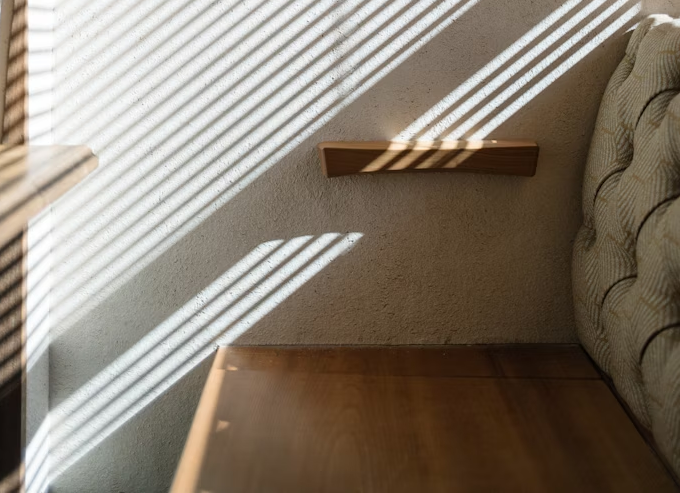[{"id":2223,"link":"https:\/\/selfmadeglow.com\/2025\/06\/25\/bloat-no-more-5-daily-habits-for-better-lymphatic-flow\/","name":"bloat-no-more-5-daily-habits-for-better-lymphatic-flow","thumbnail":{"url":"https:\/\/i0.wp.com\/selfmadeglow.com\/wp-content\/uploads\/2025\/06\/image_2025-06-29_144658888-e1751222948766.png?fit=486%2C357&ssl=1","alt":""},"title":"Bloat No More: 5 Daily Habits for Better Lymphatic Flow","author":{"name":"SelfMadeGlow","link":"https:\/\/selfmadeglow.com\/author\/dariatiganas04\/"},"date":"Jun 25, 2025","dateGMT":"2025-06-25 17:56:09","modifiedDate":"2025-07-01 04:42:41","modifiedDateGMT":"2025-07-01 04:42:41","commentCount":"0","commentStatus":"open","categories":{"coma":"<a href=\"https:\/\/selfmadeglow.com\/category\/wellness\/\" rel=\"category tag\">Wellness<\/a>","space":"<a href=\"https:\/\/selfmadeglow.com\/category\/wellness\/\" rel=\"category tag\">Wellness<\/a>"},"taxonomies":{"post_tag":""},"readTime":{"min":1,"sec":39},"status":"publish","excerpt":"Flow state."},{"id":1983,"link":"https:\/\/selfmadeglow.com\/2025\/06\/20\/how-to-design-a-morning-routine-that-serves-you\/","name":"how-to-design-a-morning-routine-that-serves-you","thumbnail":{"url":"https:\/\/i0.wp.com\/selfmadeglow.com\/wp-content\/uploads\/2025\/06\/image_2025-06-27_174259683-e1751060677260.png?fit=680%2C493&ssl=1","alt":""},"title":"How to Design a Morning Routine That Serves You","author":{"name":"SelfMadeGlow","link":"https:\/\/selfmadeglow.com\/author\/dariatiganas04\/"},"date":"Jun 20, 2025","dateGMT":"2025-06-20 20:32:09","modifiedDate":"2025-06-29 18:41:21","modifiedDateGMT":"2025-06-29 18:41:21","commentCount":"1","commentStatus":"open","categories":{"coma":"<a href=\"https:\/\/selfmadeglow.com\/category\/am\/\" rel=\"category tag\">AM Routines<\/a>","space":"<a href=\"https:\/\/selfmadeglow.com\/category\/am\/\" rel=\"category tag\">AM Routines<\/a>"},"taxonomies":{"post_tag":""},"readTime":{"min":5,"sec":40},"status":"publish","excerpt":"Not the other way around."},{"id":1957,"link":"https:\/\/selfmadeglow.com\/2025\/06\/15\/cold-showers-transformed-my-brain-its-backed-by-research\/","name":"cold-showers-transformed-my-brain-its-backed-by-research","thumbnail":{"url":"https:\/\/i0.wp.com\/selfmadeglow.com\/wp-content\/uploads\/2025\/06\/image_2025-06-26_204418225.png?fit=1125%2C750&ssl=1","alt":"Credit: Rodion Kutsaiev on Pexels"},"title":"Cold Showers Transformed My Brain. It\u2019s Backed by Research.","author":{"name":"SelfMadeGlow","link":"https:\/\/selfmadeglow.com\/author\/dariatiganas04\/"},"date":"Jun 15, 2025","dateGMT":"2025-06-15 00:38:45","modifiedDate":"2025-06-27 20:32:45","modifiedDateGMT":"2025-06-27 20:32:45","commentCount":"3","commentStatus":"open","categories":{"coma":"<a href=\"https:\/\/selfmadeglow.com\/category\/featured\/\" rel=\"category tag\">Featured<\/a>","space":"<a href=\"https:\/\/selfmadeglow.com\/category\/featured\/\" rel=\"category tag\">Featured<\/a>"},"taxonomies":{"post_tag":""},"readTime":{"min":1,"sec":30},"status":"publish","excerpt":"Nature's brain booster."},{"id":1890,"link":"https:\/\/selfmadeglow.com\/2025\/06\/09\/taking-a-real-day-off-how-to-actually-unwind\/","name":"taking-a-real-day-off-how-to-actually-unwind","thumbnail":{"url":"https:\/\/i0.wp.com\/selfmadeglow.com\/wp-content\/uploads\/2025\/06\/image_2025-06-24_201859978.png?fit=1260%2C660&ssl=1","alt":""},"title":"Taking a Real Day Off: How to Actually Unwind","author":{"name":"SelfMadeGlow","link":"https:\/\/selfmadeglow.com\/author\/dariatiganas04\/"},"date":"Jun 9, 2025","dateGMT":"2025-06-09 00:18:39","modifiedDate":"2025-06-27 01:07:45","modifiedDateGMT":"2025-06-27 01:07:45","commentCount":"0","commentStatus":"open","categories":{"coma":"<a href=\"https:\/\/selfmadeglow.com\/category\/featured\/\" rel=\"category tag\">Featured<\/a>","space":"<a href=\"https:\/\/selfmadeglow.com\/category\/featured\/\" rel=\"category tag\">Featured<\/a>"},"taxonomies":{"post_tag":""},"readTime":{"min":3,"sec":30},"status":"publish","excerpt":"Time to relax."},{"id":1673,"link":"https:\/\/selfmadeglow.com\/2025\/06\/02\/the-best-natural-sun-moisturizers-for-summer\/","name":"the-best-natural-sun-moisturizers-for-summer","thumbnail":{"url":"https:\/\/i0.wp.com\/selfmadeglow.com\/wp-content\/uploads\/2025\/06\/image-7.png?fit=1470%2C980&ssl=1","alt":""},"title":"The Best Natural Sun Moisturizers for Summer","author":{"name":"SelfMadeGlow","link":"https:\/\/selfmadeglow.com\/author\/dariatiganas04\/"},"date":"Jun 2, 2025","dateGMT":"2025-06-02 19:37:56","modifiedDate":"2025-06-28 04:01:51","modifiedDateGMT":"2025-06-28 04:01:51","commentCount":"0","commentStatus":"open","categories":{"coma":"<a href=\"https:\/\/selfmadeglow.com\/category\/featured\/\" rel=\"category tag\">Featured<\/a>","space":"<a href=\"https:\/\/selfmadeglow.com\/category\/featured\/\" rel=\"category tag\">Featured<\/a>"},"taxonomies":{"post_tag":""},"readTime":{"min":2,"sec":29},"status":"publish","excerpt":"Get that summer glow."},{"id":1609,"link":"https:\/\/selfmadeglow.com\/2025\/05\/26\/the-collagen-beauty-broth-simple-delicious-and-healthy\/","name":"the-collagen-beauty-broth-simple-delicious-and-healthy","thumbnail":{"url":"https:\/\/i0.wp.com\/selfmadeglow.com\/wp-content\/uploads\/2025\/06\/image_2025-05-31_205217387.png?fit=600%2C374&ssl=1","alt":""},"title":"The Collagen Beauty Broth: Made Simple and Rich in Nutrients","author":{"name":"SelfMadeGlow","link":"https:\/\/selfmadeglow.com\/author\/dariatiganas04\/"},"date":"May 26, 2025","dateGMT":"2025-05-26 00:44:01","modifiedDate":"2025-06-28 00:28:26","modifiedDateGMT":"2025-06-28 00:28:26","commentCount":"1","commentStatus":"open","categories":{"coma":"<a href=\"https:\/\/selfmadeglow.com\/category\/beauty\/\" rel=\"category tag\">Beauty<\/a>","space":"<a href=\"https:\/\/selfmadeglow.com\/category\/beauty\/\" rel=\"category tag\">Beauty<\/a>"},"taxonomies":{"post_tag":""},"readTime":{"min":1,"sec":38},"status":"publish","excerpt":"Bone broth goodness."},{"id":1600,"link":"https:\/\/selfmadeglow.com\/2025\/05\/20\/rice-water-hair-rinse-benefits-myths-and-what-to-know\/","name":"rice-water-hair-rinse-benefits-myths-and-what-to-know","thumbnail":{"url":"https:\/\/selfmadeglow.com\/wp-content\/uploads\/2025\/06\/Rice-Water-Rinse-Proven-Benefits-and-Myths-SelfMadeGlow-scaled.avif","alt":""},"title":"Rice Water: Proven Benefits & Myths You Need to Know","author":{"name":"SelfMadeGlow","link":"https:\/\/selfmadeglow.com\/author\/dariatiganas04\/"},"date":"May 20, 2025","dateGMT":"2025-05-20 00:14:12","modifiedDate":"2025-06-27 01:11:07","modifiedDateGMT":"2025-06-27 01:11:07","commentCount":"0","commentStatus":"open","categories":{"coma":"<a href=\"https:\/\/selfmadeglow.com\/category\/beauty\/\" rel=\"category tag\">Beauty<\/a>","space":"<a href=\"https:\/\/selfmadeglow.com\/category\/beauty\/\" rel=\"category tag\">Beauty<\/a>"},"taxonomies":{"post_tag":""},"readTime":{"min":2,"sec":15},"status":"publish","excerpt":"DIY shine for your hair."},{"id":1528,"link":"https:\/\/selfmadeglow.com\/2025\/05\/14\/the-only-3-apps-you-need-for-a-clutter-free-phone\/","name":"the-only-3-apps-you-need-for-a-clutter-free-phone","thumbnail":{"url":"https:\/\/i0.wp.com\/selfmadeglow.com\/wp-content\/uploads\/2025\/05\/image_2025-06-24_024941339.png?fit=500%2C750&ssl=1","alt":""},"title":"3 Simple Apps for a Clutter-Free Phone (and Mind)","author":{"name":"SelfMadeGlow","link":"https:\/\/selfmadeglow.com\/author\/dariatiganas04\/"},"date":"May 14, 2025","dateGMT":"2025-05-14 03:29:07","modifiedDate":"2025-06-24 06:53:26","modifiedDateGMT":"2025-06-24 06:53:26","commentCount":"1","commentStatus":"open","categories":{"coma":"<a href=\"https:\/\/selfmadeglow.com\/category\/lifestyle\/\" rel=\"category tag\">Lifestyle<\/a>","space":"<a href=\"https:\/\/selfmadeglow.com\/category\/lifestyle\/\" rel=\"category tag\">Lifestyle<\/a>"},"taxonomies":{"post_tag":""},"readTime":{"min":2,"sec":52},"status":"publish","excerpt":"Get organized fast."},{"id":1107,"link":"https:\/\/selfmadeglow.com\/2025\/05\/08\/the-all-nighter-recovery-guide-how-to-feel-and-look-fresh\/","name":"the-all-nighter-recovery-guide-how-to-feel-and-look-fresh","thumbnail":{"url":"https:\/\/i0.wp.com\/selfmadeglow.com\/wp-content\/uploads\/2025\/05\/image_2025-06-26_210536379.png?fit=870%2C1160&ssl=1","alt":"Credit: nine koepfer on Unsplash"},"title":"All-Nighter Recovery Guide: How to Feel and Look Fresh","author":{"name":"SelfMadeGlow","link":"https:\/\/selfmadeglow.com\/author\/dariatiganas04\/"},"date":"May 8, 2025","dateGMT":"2025-05-08 21:32:48","modifiedDate":"2025-06-29 16:18:29","modifiedDateGMT":"2025-06-29 16:18:29","commentCount":"1","commentStatus":"open","categories":{"coma":"<a href=\"https:\/\/selfmadeglow.com\/category\/featured\/\" rel=\"category tag\">Featured<\/a>","space":"<a href=\"https:\/\/selfmadeglow.com\/category\/featured\/\" rel=\"category tag\">Featured<\/a>"},"taxonomies":{"post_tag":""},"readTime":{"min":4,"sec":21},"status":"publish","excerpt":"Look and feel refreshed."},{"id":1097,"link":"https:\/\/selfmadeglow.com\/2025\/05\/01\/consistent-skincare-habits-a-simple-guide-that-actually-works\/","name":"consistent-skincare-habits-a-simple-guide-that-actually-works","thumbnail":{"url":"https:\/\/i0.wp.com\/selfmadeglow.com\/wp-content\/uploads\/2025\/05\/image_2025-06-27_202714821.png?fit=1125%2C750&ssl=1","alt":""},"title":"Consistent Skincare Habits: A Simple Guide That Actually Works","author":{"name":"SelfMadeGlow","link":"https:\/\/selfmadeglow.com\/author\/dariatiganas04\/"},"date":"May 1, 2025","dateGMT":"2025-05-01 20:32:15","modifiedDate":"2025-06-28 03:17:05","modifiedDateGMT":"2025-06-28 03:17:05","commentCount":"1","commentStatus":"open","categories":{"coma":"<a href=\"https:\/\/selfmadeglow.com\/category\/featured\/\" rel=\"category tag\">Featured<\/a>","space":"<a href=\"https:\/\/selfmadeglow.com\/category\/featured\/\" rel=\"category tag\">Featured<\/a>"},"taxonomies":{"post_tag":""},"readTime":{"min":3,"sec":18},"status":"publish","excerpt":"Finding the energy can be hard."},{"id":526,"link":"https:\/\/selfmadeglow.com\/2025\/04\/26\/how-to-wake-up-glowing-skincare-mindset-sleep-all-in-one\/","name":"how-to-wake-up-glowing-skincare-mindset-sleep-all-in-one","thumbnail":{"url":"https:\/\/i0.wp.com\/selfmadeglow.com\/wp-content\/uploads\/2025\/04\/image_2025-06-26_140926932.png?fit=687%2C1031&ssl=1","alt":""},"title":"How to Wake Up Glowing: The Bedtime Routine for Better Skin, Sleep, and Mind","author":{"name":"SelfMadeGlow","link":"https:\/\/selfmadeglow.com\/author\/dariatiganas04\/"},"date":"Apr 26, 2025","dateGMT":"2025-04-26 14:58:04","modifiedDate":"2025-06-29 16:23:43","modifiedDateGMT":"2025-06-29 16:23:43","commentCount":"0","commentStatus":"open","categories":{"coma":"<a href=\"https:\/\/selfmadeglow.com\/category\/pm\/\" rel=\"category tag\">PM Routines<\/a>","space":"<a href=\"https:\/\/selfmadeglow.com\/category\/pm\/\" rel=\"category tag\">PM Routines<\/a>"},"taxonomies":{"post_tag":""},"readTime":{"min":5,"sec":7},"status":"publish","excerpt":"Radiant, glowing skin overnight."},{"id":520,"link":"https:\/\/selfmadeglow.com\/2025\/04\/21\/9-luxe-style-trends-that-actually-cost-nothing\/","name":"9-luxe-style-trends-that-actually-cost-nothing","thumbnail":{"url":"https:\/\/i0.wp.com\/selfmadeglow.com\/wp-content\/uploads\/2025\/05\/image-1-scaled.png?fit=1920%2C2560&ssl=1","alt":""},"title":"9 Free Ways to Elevate Your Chic Style Timelessly","author":{"name":"SelfMadeGlow","link":"https:\/\/selfmadeglow.com\/author\/dariatiganas04\/"},"date":"Apr 21, 2025","dateGMT":"2025-04-21 00:50:16","modifiedDate":"2025-06-25 01:23:49","modifiedDateGMT":"2025-06-25 01:23:49","commentCount":"0","commentStatus":"open","categories":{"coma":"<a href=\"https:\/\/selfmadeglow.com\/category\/lifestyle\/\" rel=\"category tag\">Lifestyle<\/a>","space":"<a href=\"https:\/\/selfmadeglow.com\/category\/lifestyle\/\" rel=\"category tag\">Lifestyle<\/a>"},"taxonomies":{"post_tag":""},"readTime":{"min":3,"sec":30},"status":"publish","excerpt":"No budget? No problem!"}]
[{"id":2223,"link":"https:\/\/selfmadeglow.com\/2025\/06\/25\/bloat-no-more-5-daily-habits-for-better-lymphatic-flow\/","name":"bloat-no-more-5-daily-habits-for-better-lymphatic-flow","thumbnail":{"url":"https:\/\/i0.wp.com\/selfmadeglow.com\/wp-content\/uploads\/2025\/06\/image_2025-06-29_144658888-e1751222948766.png?fit=486%2C357&ssl=1","alt":""},"title":"Bloat No More: 5 Daily Habits for Better Lymphatic Flow","author":{"name":"SelfMadeGlow","link":"https:\/\/selfmadeglow.com\/author\/dariatiganas04\/"},"date":"Jun 25, 2025","dateGMT":"2025-06-25 17:56:09","modifiedDate":"2025-07-01 04:42:41","modifiedDateGMT":"2025-07-01 04:42:41","commentCount":"0","commentStatus":"open","categories":{"coma":"<a href=\"https:\/\/selfmadeglow.com\/category\/wellness\/\" rel=\"category tag\">Wellness<\/a>","space":"<a href=\"https:\/\/selfmadeglow.com\/category\/wellness\/\" rel=\"category tag\">Wellness<\/a>"},"taxonomies":{"post_tag":""},"readTime":{"min":1,"sec":39},"status":"publish","excerpt":"Flow state."},{"id":1983,"link":"https:\/\/selfmadeglow.com\/2025\/06\/20\/how-to-design-a-morning-routine-that-serves-you\/","name":"how-to-design-a-morning-routine-that-serves-you","thumbnail":{"url":"https:\/\/i0.wp.com\/selfmadeglow.com\/wp-content\/uploads\/2025\/06\/image_2025-06-27_174259683-e1751060677260.png?fit=680%2C493&ssl=1","alt":""},"title":"How to Design a Morning Routine That Serves You","author":{"name":"SelfMadeGlow","link":"https:\/\/selfmadeglow.com\/author\/dariatiganas04\/"},"date":"Jun 20, 2025","dateGMT":"2025-06-20 20:32:09","modifiedDate":"2025-06-29 18:41:21","modifiedDateGMT":"2025-06-29 18:41:21","commentCount":"1","commentStatus":"open","categories":{"coma":"<a href=\"https:\/\/selfmadeglow.com\/category\/am\/\" rel=\"category tag\">AM Routines<\/a>","space":"<a href=\"https:\/\/selfmadeglow.com\/category\/am\/\" rel=\"category tag\">AM Routines<\/a>"},"taxonomies":{"post_tag":""},"readTime":{"min":5,"sec":40},"status":"publish","excerpt":"Not the other way around."},{"id":1957,"link":"https:\/\/selfmadeglow.com\/2025\/06\/15\/cold-showers-transformed-my-brain-its-backed-by-research\/","name":"cold-showers-transformed-my-brain-its-backed-by-research","thumbnail":{"url":"https:\/\/i0.wp.com\/selfmadeglow.com\/wp-content\/uploads\/2025\/06\/image_2025-06-26_204418225.png?fit=1125%2C750&ssl=1","alt":"Credit: Rodion Kutsaiev on Pexels"},"title":"Cold Showers Transformed My Brain. It\u2019s Backed by Research.","author":{"name":"SelfMadeGlow","link":"https:\/\/selfmadeglow.com\/author\/dariatiganas04\/"},"date":"Jun 15, 2025","dateGMT":"2025-06-15 00:38:45","modifiedDate":"2025-06-27 20:32:45","modifiedDateGMT":"2025-06-27 20:32:45","commentCount":"3","commentStatus":"open","categories":{"coma":"<a href=\"https:\/\/selfmadeglow.com\/category\/featured\/\" rel=\"category tag\">Featured<\/a>","space":"<a href=\"https:\/\/selfmadeglow.com\/category\/featured\/\" rel=\"category tag\">Featured<\/a>"},"taxonomies":{"post_tag":""},"readTime":{"min":1,"sec":30},"status":"publish","excerpt":"Nature's brain booster."},{"id":1890,"link":"https:\/\/selfmadeglow.com\/2025\/06\/09\/taking-a-real-day-off-how-to-actually-unwind\/","name":"taking-a-real-day-off-how-to-actually-unwind","thumbnail":{"url":"https:\/\/i0.wp.com\/selfmadeglow.com\/wp-content\/uploads\/2025\/06\/image_2025-06-24_201859978.png?fit=1260%2C660&ssl=1","alt":""},"title":"Taking a Real Day Off: How to Actually Unwind","author":{"name":"SelfMadeGlow","link":"https:\/\/selfmadeglow.com\/author\/dariatiganas04\/"},"date":"Jun 9, 2025","dateGMT":"2025-06-09 00:18:39","modifiedDate":"2025-06-27 01:07:45","modifiedDateGMT":"2025-06-27 01:07:45","commentCount":"0","commentStatus":"open","categories":{"coma":"<a href=\"https:\/\/selfmadeglow.com\/category\/featured\/\" rel=\"category tag\">Featured<\/a>","space":"<a href=\"https:\/\/selfmadeglow.com\/category\/featured\/\" rel=\"category tag\">Featured<\/a>"},"taxonomies":{"post_tag":""},"readTime":{"min":3,"sec":30},"status":"publish","excerpt":"Time to relax."}]

